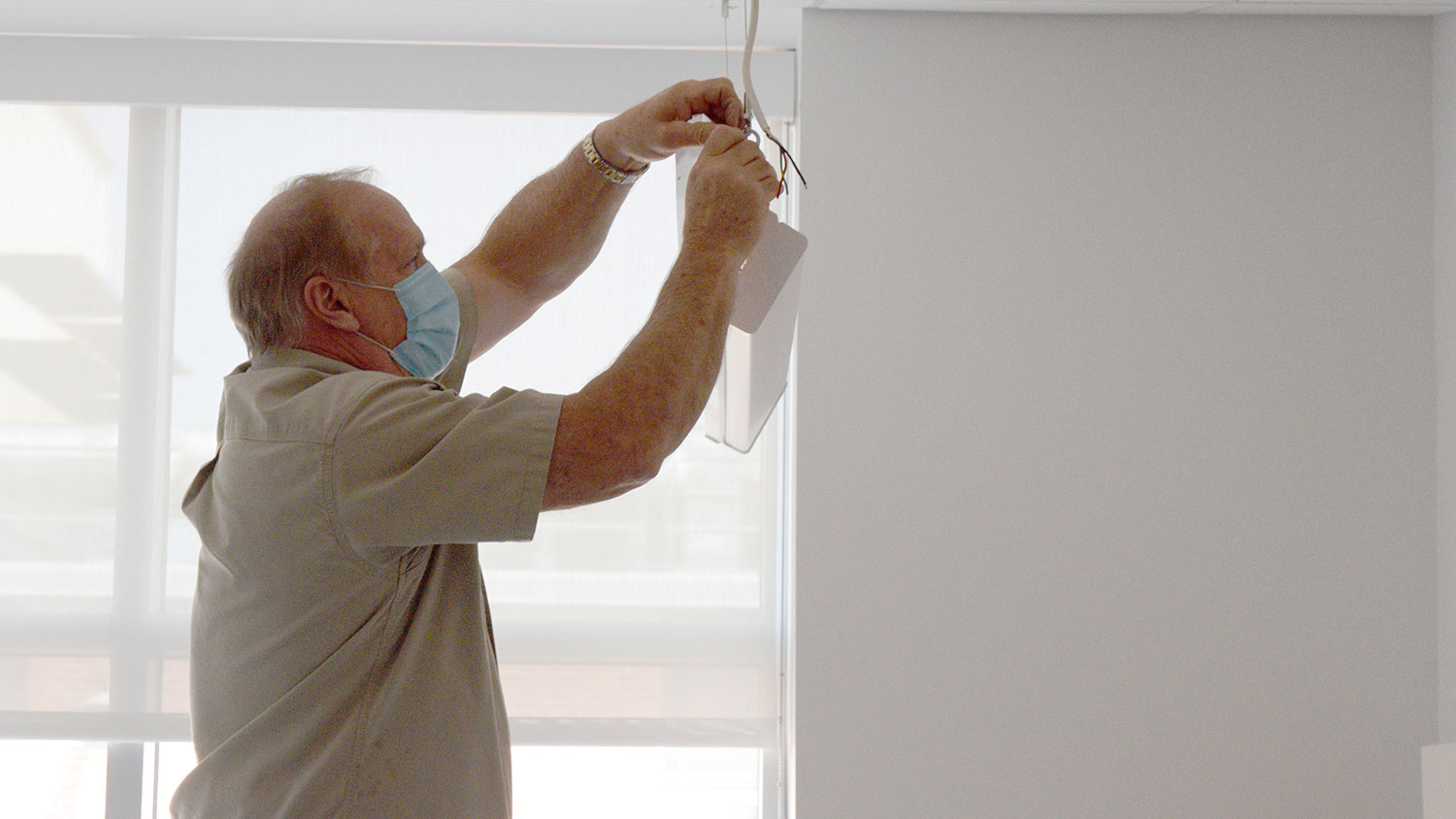New Polk Hall Lighting Boosts Efficiency

New LED lighting was recently installed throughout the third floor of Polk Hall. Nearly 350 new lights and occupancy sensors will significantly increase light output across the 31,000-square-foot area and save about $8,000 per year in electricity costs.
The new lighting was installed in a coordinated effort by NC State Facilities and the College of Agriculture and Life Sciences.
“Light levels have approximately doubled in many laboratories, which makes the spaces feel more bright and vibrant and makes them a better workspace for researchers,” said Patricia Routh of the Department of Animal Science.
The new lights will also save on maintenance costs. While fluorescent lights regularly need new lamps and ballasts to keep them running, the LEDs are expected to provide many years of maintenance-free service.
Polk Hall was originally constructed in 1926 and later expanded in the 1950s, 1960s and 2000s. Most of the existing lights on the third floor were from the 1960s and 1970s and contained many outdated T12 fluorescent fixtures, which use two to three times more energy than LEDs. Part of the reason for the project was to improve the aesthetics and consistency of the lighting in the building.
“The new lighting in Polk Hall is brighter, especially in the hallways. Also, the lighting is more manageable and more energy efficient than the old lighting,” said Dr. Paul Swartz of the Department of Molecular and Structural Biochemistry.
The lighting installation was completed by the NC State Facilities Division’s own Construction Shop.
“Since upgrading the lighting in a fully occupied research building takes a lot of coordination, it’s been great to use our in-house staff through the Construction Shop for this project. The team is very responsive and understands the needs of the occupants,” said Annette Snead, the In-House Construction Project Manager.
NC State Energy Management performs efficiency upgrades like these throughout campus in order to decrease the university’s overall energy consumption. Since 2002, NC State has reduced its energy use per gross square foot by 37 percent.